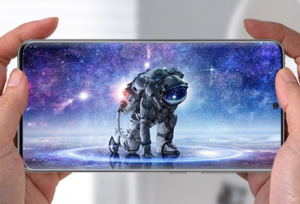Samsung and AMD have extended their multi-year agreement to bring high-performance, ultra-low-power AMD Radeon graphics solutions to an expanded portfolio of Samsung Exynos SoCs.

The partnership aims to provide console-level graphics quality and optimized power consumption to more mobile devices, offering immersive and long-lasting gaming experiences. Samsung and AMD first announced their partnership to license AMD RDNA graphics architecture in 2019, leading to the co-development of Samsung Xclipse, a mobile graphics processing unit (GPU) based on the AMD RDNA 2 architecture in 2022. Samsung says, Xclipse was the industry’s first mobile GPU with hardware-accelerated ray tracing and variable rate shading features for console-like gameplay on mobile devices. Fact check, please.
The Next Feature Frontier: Ray Tracing for Mobile
Ray tracing is a complex process that can vary in its implementation across different devices and platforms. There are different levels of ray tracing, and the specific hardware and software used can affect the quality and performance of the ray tracing capabilities. Imagination Technologies has classified six levels of ray tracing, with higher levels offering more advanced and efficient implementations.
AMD’s intersection engine used in Samsung’s Exynos SoCs, as well as Arm’s Immortalis used by MediaTek, and Qualcomm’s use of core box acceleration and triangle intersections, all represent level 2 implementations of ray tracing. These implementations use dedicated hardware to recognize and calculate ray intersections, which is faster and more efficient than software-based solutions.
However, mobile devices have a power consumption limit that restricts the number of intersection engines and SIMD cores that can be used. This limitation means that mobile devices cannot match the level of performance and quality seen in high-end PC and console implementations of ray tracing.
While there is excitement about the prospect of ray tracing on mobile devices, it is important to manage expectations. There are no conclusive benchmarks or real-world tests available for mobile devices, and it may take until autumn 2023 to see the first RT benchmarks on smartphones. Even then, the benchmarks will likely be with synthetic tests and a limited number of games.

